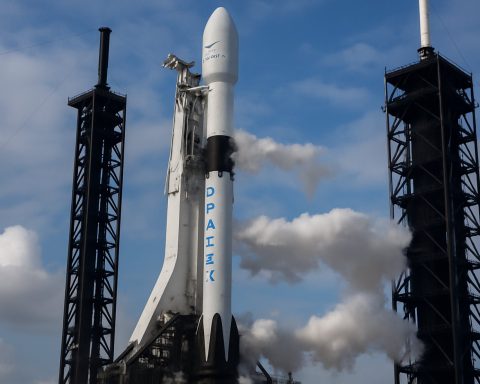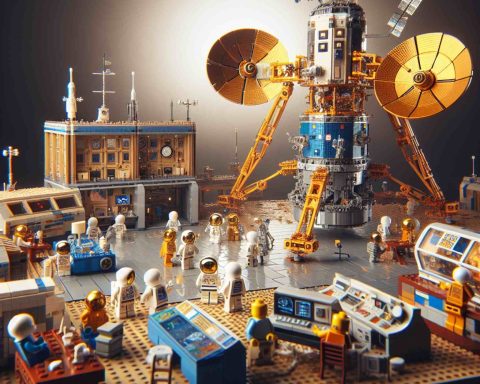- A fiery spectacle occurred in February when SpaceX’s Falcon 9 rocket’s upper stage made an uncontrolled descent, scattering debris over Poland.
- The rocket, launched from California for the Starlink mission, was intended to disintegrate quietly over the ocean but was diverted by a liquid oxygen leak.
- The leak caused the rocket to deviate from its planned path, preventing a controlled deorbit burn.
- On February 19th, the spectacle reached its peak, offering a celestial display as debris lit up the European sky.
- SpaceX is collaborating with Polish authorities to clear debris and ensure no toxic substances remain.
- This event serves as a reminder of the inherent risks in space exploration, despite advancements in technology.
Clouds parted and eyes widened across Europe as a fiery spectacle lit up the February sky, a celestial display born from an unfortunate twist in SpaceX’s ambitious Starlink mission. Instead of the intended quiet disintegration over the ocean, the Falcon 9 rocket’s upper stage ended its journey with an unintended descent over the continent, scattering debris across the picturesque landscape of Poland.
These events unravelled after SpaceX successfully launched its Falcon 9 rocket from the golden coast of California, aiming to carve its place in low Earth orbit with a fleet of Starlink satellites. All seemed routine until a sneak attack by a small liquid oxygen leak altered the rocket’s fate. This invisible interloper nudged the vehicle into unexpectedly wobbly dance moves, preventing the controlled deorbit burn and sending it on an unpredictable voyage.
The terrestrial drama reached its climax on February 19th, when locals were treated to an unexpected fireworks show—a cosmic performance delivered by an uncontrolled plunge. Chunks of rocket found their final resting place on Polish soil, with one farmer discovering remnants nestled in his winter-worn fields.
SpaceX has since mobilized, working hand in hand with Polish authorities to scour and cleanse the land of any remnants. The promise of no toxic leftovers offers a sigh of relief to those nearby, but the cautionary tale remains: unexpected risks sometimes accompany the grandeur of space exploration.
As SpaceX rebounds from this unforeseen tumble, the mission underscores a vital truth: even in our era of technological marvels, the cosmos can still surprise us, insisting on respect as humanity ventures ever further beyond Earth’s bounds.
SpaceX’s Unexpected Show: When Rockets Write Cosmic Drama Over Europe
How-To Steps & Life Hacks
How to Stay Safe During Space Debris Incidents:
1. Stay Informed: Follow updates from reliable sources like NASA or the European Space Agency to receive warnings about potential reentry events.
2. Avoid Unknown Objects: If you encounter unfamiliar metallic debris, do not touch it. Instead, report it to local authorities as it may be toxic or hazardous.
3. Use Technology Alerts: Download apps such as Heavens-Above or SatTrack to receive alerts about launches and potential reentries.
Real-World Use Cases
Space debris, such as the Falcon 9 incident, highlights the need for:
– Improved Space Traffic Management: With the increasing number of satellites, especially in LEO (Low Earth Orbit), managing spacecraft paths to avoid collisions is vital.
– Advancements in Deorbit Technology: Developing more accurate deorbit systems to ensure rocket stages reenter safely over oceans rather than land.
Market Forecasts & Industry Trends
Growth of LEO Satellites:
– The launch of satellites like SpaceX’s Starlink is part of a growing trend. The satellite internet market is expected to grow significantly as companies vie to provide global broadband services.
– Projection: By 2027, the global satellite internet market could surpass $15 billion, driven by demand for connectivity in underserved regions.
Reviews & Comparisons
Comparison: SpaceX vs. Competitors
– SpaceX: Known for reusable rockets and ambitious plans like Starlink, SpaceX primarily competes on cost and technological innovation.
– Blue Origin: Offers suborbital space tourism with a focus on sustainability but is yet to rival SpaceX’s satellite deployment scale.
Controversies & Limitations
Rising Space Junk Concerns:
– Incidents like the Falcon 9’s unplanned reentry add to the ongoing debate on space debris management.
– Regulatory Challenges: Calls for stricter international policies to manage and mitigate space debris are intensifying.
Features, Specs & Pricing
Falcon 9 Rocket:
– Payload Capacity: Up to 22,800 kilograms to low Earth orbit.
– Cost per Launch: Approximately $62 million, considered competitive in the industry.
Security & Sustainability
Environmental Impact:
– SpaceX ensures that rocket stages deorbit over oceans, minimizing risk to populated areas. However, incidents like the Polish reentry remind us of the unpredictability in space missions.
Insights & Predictions
Future Space Missions:
– Expect more regulatory frameworks as part of international agreements to monitor and control space debris.
– Increased investment in developing on-orbit servicing satellites that can repair or deorbit defunct satellites.
Tutorials & Compatibility
Track Satellite Events:
– Utilize tools like NORAD Space Track or the SpaceX mobile application for tracking upcoming launches and real-time satellite locations.
Pros & Cons Overview
Pros:
– Innovation: SpaceX continues to push technological boundaries with reusable rockets and ambitious satellite networks.
– Cost Efficiency: Offers lower-cost launch solutions compared to traditional players.
Cons:
– Space Junk Risk: The growing number of satellites increases the potential for debris.
– Unpredictable Reentries: Incidents like the Polish event highlight ongoing challenges in deorbit management.
Actionable Recommendations
1. Educate Your Community: Host or attend local workshops on space safety and debris awareness.
2. Stay Connected: Follow space agencies on social media for real-time updates.
3. Advocate for Policy: Support initiatives for responsible space exploration and stricter debris control measures.
For more on space technology and its future impact, explore SpaceX.











